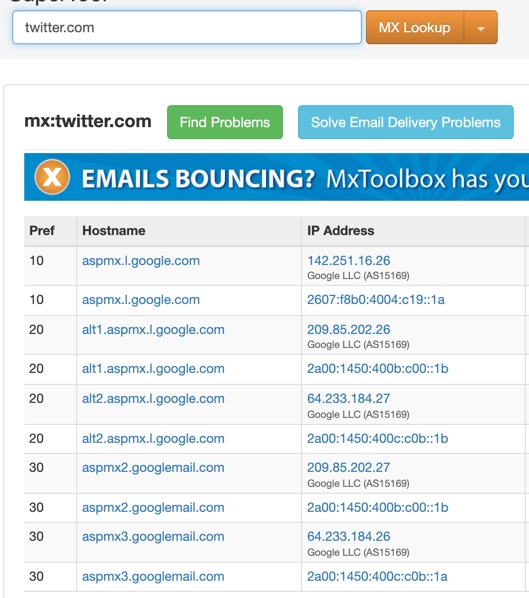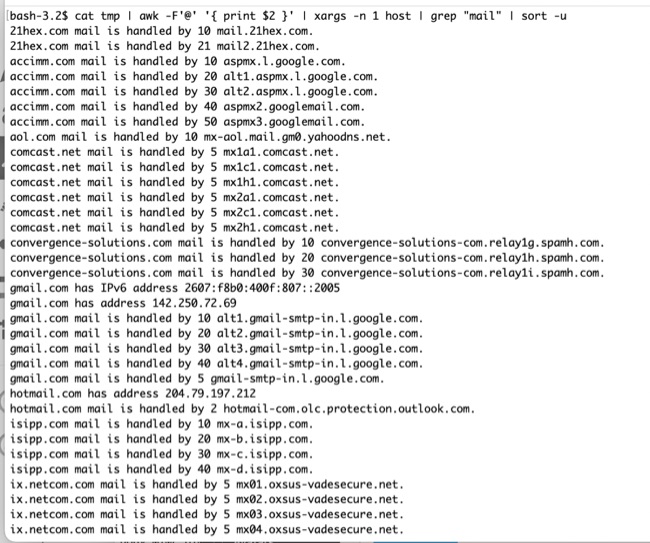We are often asked how we can be so much lower cost an alternative to Validity, and it’s because we empower you with email deliverability tips that you can do yourself to improve email deliverability, instead of charging you a bunch to give you a pretty interface and do for you what you can (and should) be doing for yourself. Today we’re going to give you two email deliverability self-help tips. One of these is actually super-easy and seems obvious, yet we regularly get a surprised look from customers when we ask them whether they have done it already.
In fact the first one is something that anyone can do, and should be doing. The other is more for the geeky senders, and for that you will need access to a non-Windows computer such as a Mac. (This is because generally speaking Windows computers don’t use a Unix-based operating system, although if you have one on your Windows computer it may work on that as well.)
The Easy Email Deliverability Check to Improve Email Deliverability: Create Your Own Free Test Accounts
One of the reasons that we can provide our sender certification services at a much lower cost than the other guys is because we don’t do all of the things which you can do for yourself, and which you should be doing for yourself, and that includes creating seed email addresses at test accounts. Even if you are using an inboxing tracking service, you still need to be monitoring test accounts yourself, if only so that when that tracking service tells you that everything is fine (or that everything isn’t), you can test it for yourself.
It is so easy to create test accounts at places like Gmail, AOL, Yahoo, and Microsoft, that, well, why wouldn’t you? And yet so many email senders don’t! Now we’re not saying that you shouldn’t also use those tracking services if you want to, but we are saying that a big key to great email deliverability is hands-on knowledge of what is going on with your email when it leaves your system. It’s kind of like having a car – you may take it to the mechanic to get your oil changed, but you still need to check your oil.
We encourage people to set up several freemail email addresses, put them on your mailing list, and check (or have someone check) those email addresses regularly (ideally with every send, but that may not be possible for everyone). Seeing what’s going on at the test accounts won’t be dispositive of your deliverability at that provider, but it can give you a clue if things are starting to change, and at least as importantly it will allow you to see, and troubleshoot if need be, how that provider is seeing the email you send – not just how the body renders, but the under the hood stuff (authentication, etc.).
The Geeky One: Know the MX Providers of the Email Addresses on Your Mailing List
It’s really easy to know how many Gmail addresses you have on your mailing list; likewise it’s easy to know how many Yahoo email addresses you have on your mailing list.
What is less easy to know is who are the receiving systems that are receiving the email you are sending to private and other non-webmail email addresses. For example, if you have a twitter.com email address on your mailing list (to pick a property at random), you would not, without further digging, know who was actually receiving the email on Twitter’s behalf. And that means that if you were to start having issues with Twitter email addresses not being delivered, you wouldn’t really know where to start looking. That’s where their MX record, which stands for “mail exchange record”, comes in. The MX record is part of the DNS system, and it points to which mail exchange (email server) system is responsible for accepting email for a given domain.
It’s still pretty easy to determine the MX of a single domain, for example you can go to the site MXToolbox.com, plug in “twitter.com” and learn that Twitter is MXed to Google’s email services.
Twitter uses Google as its email carrier

But that doesn’t scale if you have a mailing list with hundreds or maybe even thousands of private domains on it. This is, in fact, one of the reasons that senders use those inboxing tracking services, because they know how to figure out that Twitter is using Google as its mail exchange platform. We do too, and we’re going to tell you how to do it for yourself.
How to determine what email system a domain is using as their mail exchange (MX) for many domains at once
Ok, you ready? We told you this was geeky. First, you need to export your mailing list as a plain text file, ideally with only the email addresses in it.
Now, open the file and remove all of the obvious webmail addresses (gmail.com, yahoo.com, etc.). How you do this, and with what program, depends on both how big the list is and what you have at your disposal. We’re partial to the text editor BB Edit here, but use whatever works for you.
What you will be left with, primarily, is all of the email addresses on your mailing list that are not freemail or other webmail addresses and the like. Save the file (again, as plain text).
Open a terminal window and go to the prompt, and enter the following string:
cat (name of the file) | awk -F’@’ ‘{ print $2 }’ | xargs -n 1 host | grep “mail” | sort -u >(results_filename)
..where “name of the file” is the file of email addresses, and “results_filename” is the new file that will be created with the results of the command. The “sort -u” removes any duplicate lines.
Take care to hand-type in the apostrophes and quote marks, because copying and pasting can cause errors because different systems render them differently.
Here is part of the result on a sample file that we created called “tmp”:

If you want to look up a particular problem domain, to discover who they are using as their MX, you can instead do this:
cat (filename) | awk -F’@’ ‘{ print $2 }’ | xargs -n 1 host | grep “mail” | sort -u | grep (name of domain)
So, again, using twitter.com as an example, and our file name of ‘tmp’, you would do this:
cat tmp | awk -F’@’ ‘{ print $2 }’ | xargs -n 1 host | grep “mail” | sort -u | grep twitter
This yields this result in our sample:
bash-3.2$ cat tmp | awk -F’@’ ‘{ print $2 }’ | xargs -n 1 host | grep “mail” | sort -u | grep twitter
twitter.com mail is handled by 10 aspmx.l.google.com.
twitter.com mail is handled by 20 alt1.aspmx.l.google.com.
twitter.com mail is handled by 20 alt2.aspmx.l.google.com.
twitter.com mail is handled by 30 ASPMX2.GOOGLEMAIL.com.
twitter.com mail is handled by 30 ASPMX3.GOOGLEMAIL.com.
twitter.com mail is handled by 30 aspmx2.googlemail.com.
twitter.com mail is handled by 30 aspmx3.googlemail.com.
So what does all of this mean? It means that if you are having a deliverability issue with Twitter email addresses, your problem is at least as likely to be (and probably more likely to be) a problem with Google than actually with Twitter, as Twitter uses Google as their email carrier.
Many thanks to our colleague Michael Wise for his assistance with this!
If all of this is making your eyes glaze over, keep in mind that we can help you with your deliverability issues, and even certify your email as coming from a certified sender (you can email us here). But at least now you know how to do this for yourself.

Let us help YOU get to the inbox like we've helped these others!

No responses yet